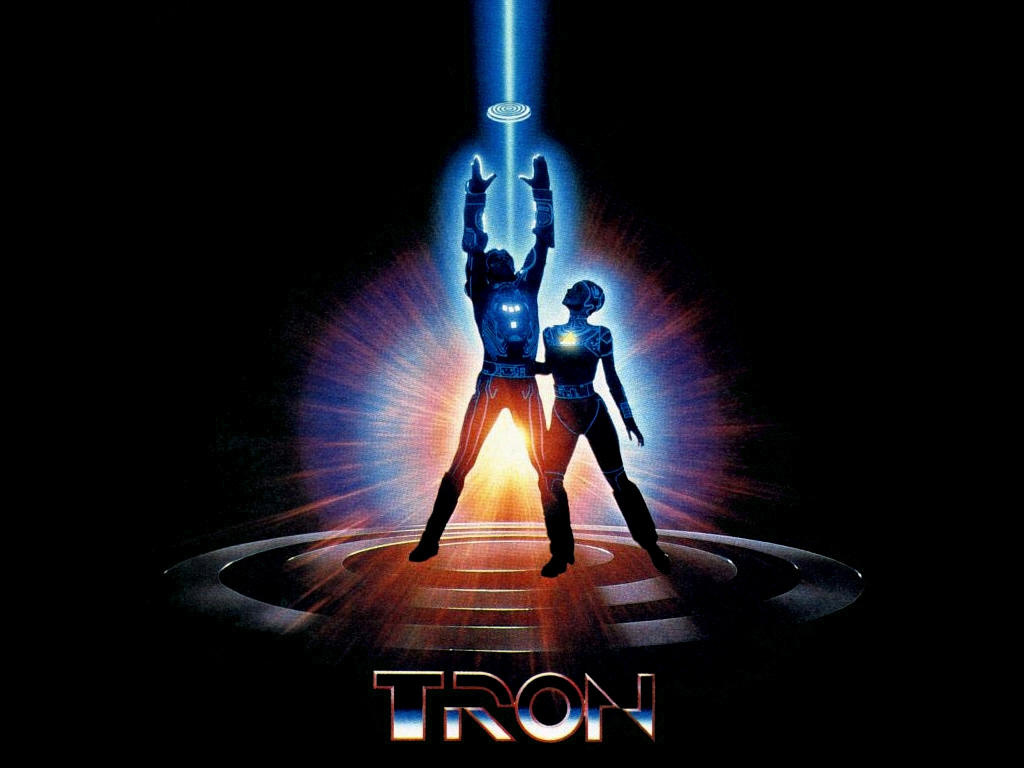
This is the story of two worlds
And the beings that inhabit them
One of these is our world
The one we can see and feel
The World of the “users”
It lies on our side of the video screen.
The other
An electronic micro civilization
Lives and breathes just beyond our grasp
This is the world of the programs
Because we, the users
Have created this New World
Part of us lives there too
On the other side of the screen.
This is the speech that was intended for the opening of the movie TRON from Walt Disney Productions. This speech never appeared in the film and exists as an alternate opening on the 20th anniversary DVD release.
Regardless, this speech sets the stage for one of the most innovative movies in Sci-Fi history. Credited as being one of the founders (if not THE founder) of CGI use in film, a claim shared only with the film The Last Starfighter, which opened one year later.
Journey now into the history of this groundbreaking movie. A movie that helped to inspire a whole generation of computer animators, the computer games that followed after its release, and the legacy of the film that carries into today, not to mention the possible future that this film might achieve.
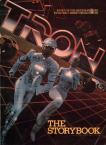 | 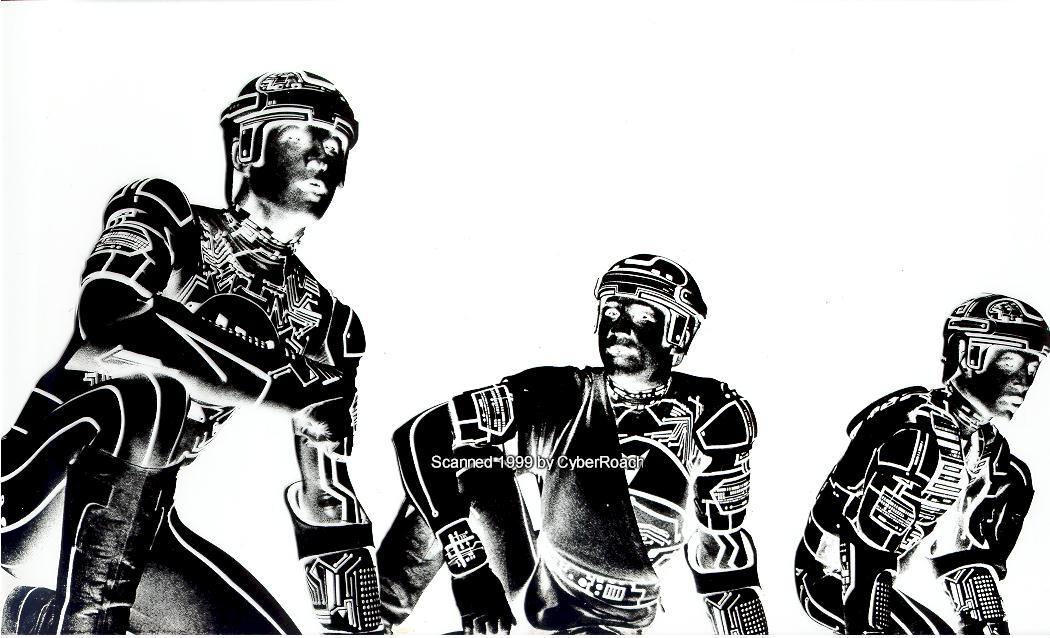 | 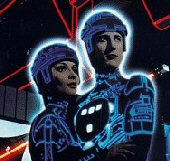 |
The origins of TRON can be traced back to a visionary animator from Boston who was fascinated with the idea of what a computer could do in an animated environment. This animator’s name was Steve Lisberger.
Considered ‘rebellious’ due to him going into a field no one else was taking part in (at least in Boston), Lisberger got his start alongside partner Eric Ladd. Together they went on to create such works for commercials for Bubblicious Bubble Gum as well as commercials for the Animated Olympics, which made use of cartoon animals. It is also through this commercial work that the origins of TRON would take shape.
Experimenting with a form of animation called ‘Backlit Animation,’ Lisberger created a line character that was illuminated in all its shots. This ‘light warrior’ threw two disks out, caught them as they returned, and then brought them together causing an explosion. This animated commercial was sold to a radio station, WCOZ 94 ½, as well as several others. It would also be one of the special effects corner stones, along with others, that would bring the idea of TRON to life.
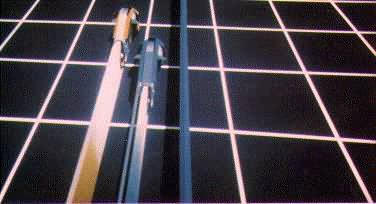 | 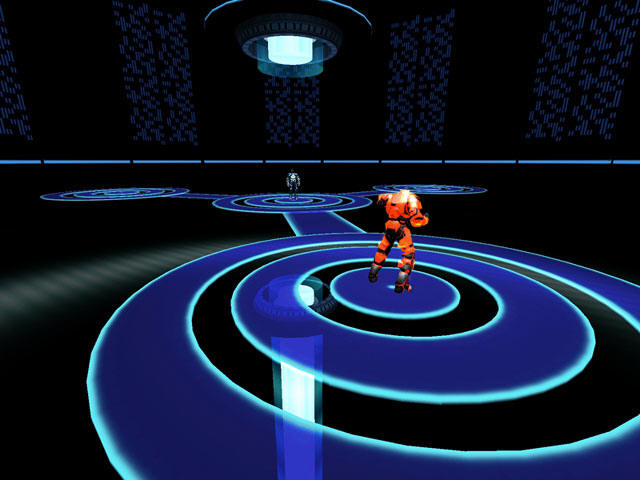 | 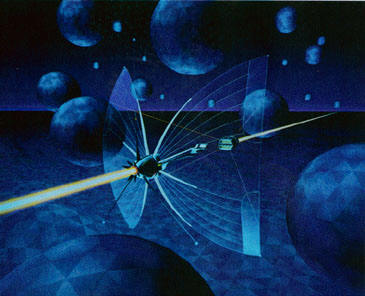 |
The movie TRON itself starred Jeff Bridges as computer genius Kevin Flynn (as well as having a few scenes as a program named CLU) who created a series of computer games for the ENCOM corporation. One day he finds his programs stolen by a rival programmer named Ed Dillinger (played by David Warner) who passes them off as his own works. Flynn tries to prove the designs are his, but soon finds himself out of a job with ENCOM.
Having set up shop at a local arcade named after himself, Flynn tries to find evidence that indicates that ENCOM’s games are actually his creations and not Dillinger’s. His efforts however are discovered by a program in the heart of the ENCOM 5-11 computer called the MCP – short for Master Control Program (voiced by David Warner) – who then freezes Flynn’s access out of the system.
Flynn, however, is not the only one who has problems with Dillinger and the MCP. Three others voice their disapproval. One of these is a young programmer named Alan Bradley (played by Bruce Boxleitner), who creates a security program by the name of TRON which is to be used to monitor the MCP (something the MCP can’t allow due to it hacking into other systems-the Pentagon and the Kremlin being next on the list.) Another is Alan’s girlfriend Lora (played by Cindy Morgan), who creates a digitizing laser that has an important role in the film, and the third is company founder Walter Gibbs (played by Barnard Hughes of ‘Mr. Merlin’ fame) who has been forced out of the ENCOM hierarchy by Dillinger. As Walter confronts Dillinger, Alan and Lora warn Flynn that Dillinger is onto him, and that his, and Alan’s access, is locked out.
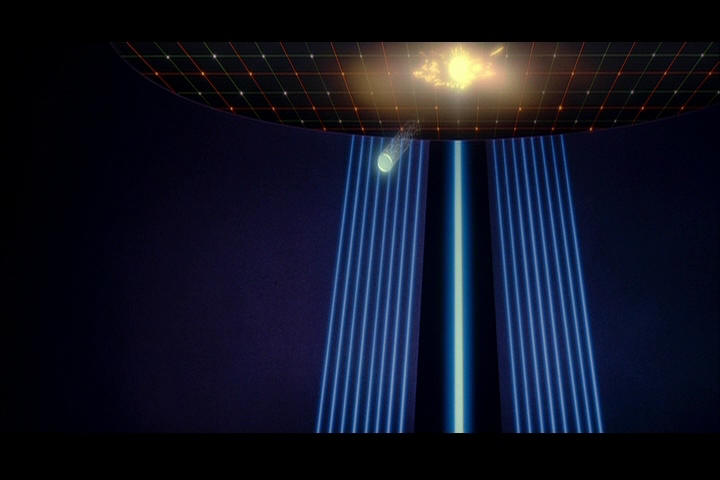 | 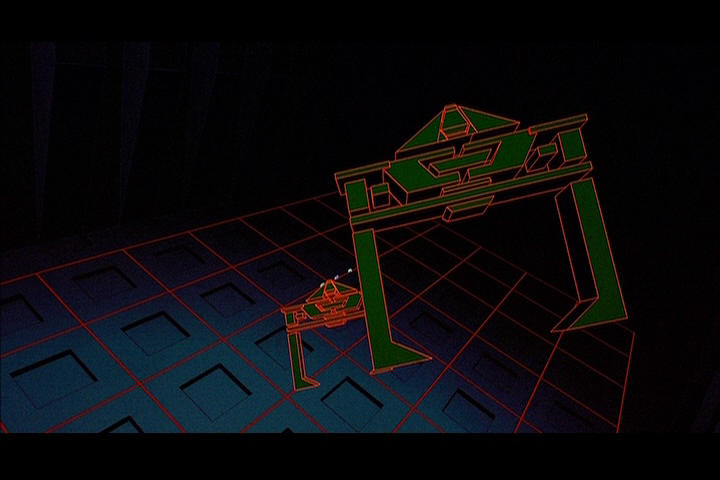 | 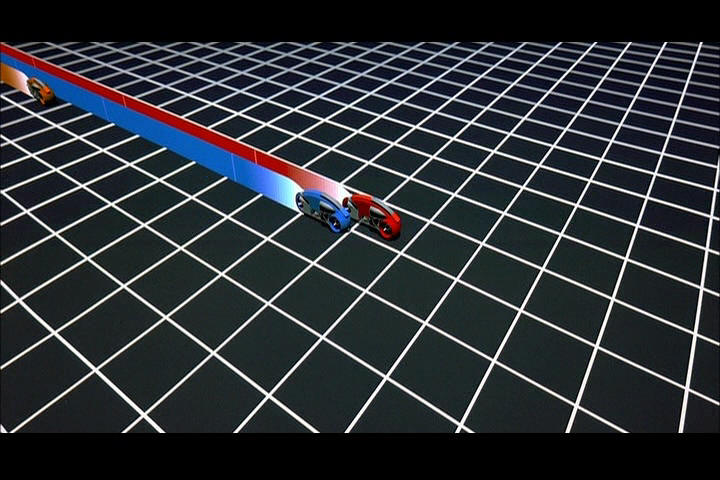 |
Not being ones to give up, Flynn, Alan and Lora break into ENCOM so Flynn can forge a new access code which would allow Alan to access his TRON program for a few minutes. As Flynn does his work he runs into the MCP who decides to deal with Flynn in a more permanent way. Making use of the digitizing laser Lora developed, the MCP shoots Flynn, digitizing him and sending him down into the world of the ENCOM 5-11 computer to a section called ‘the Game Grid’.
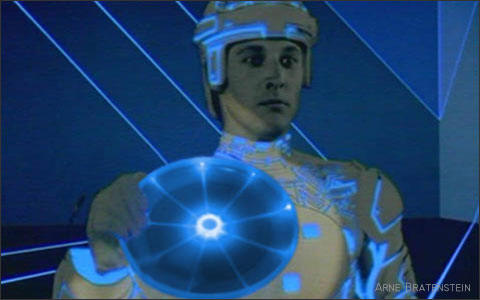 | 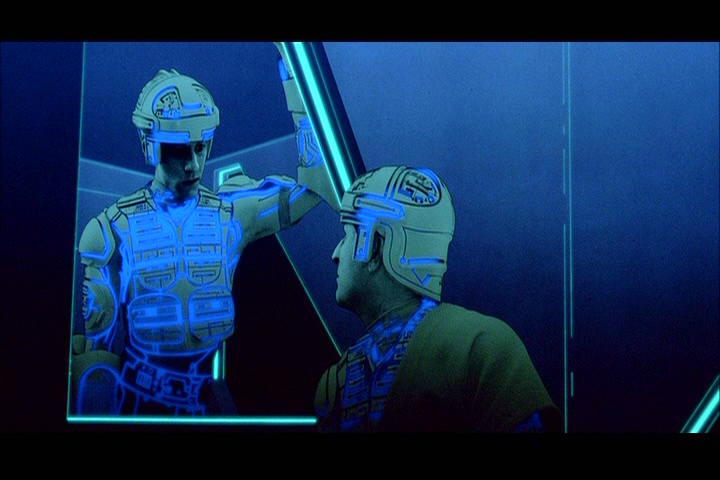 | 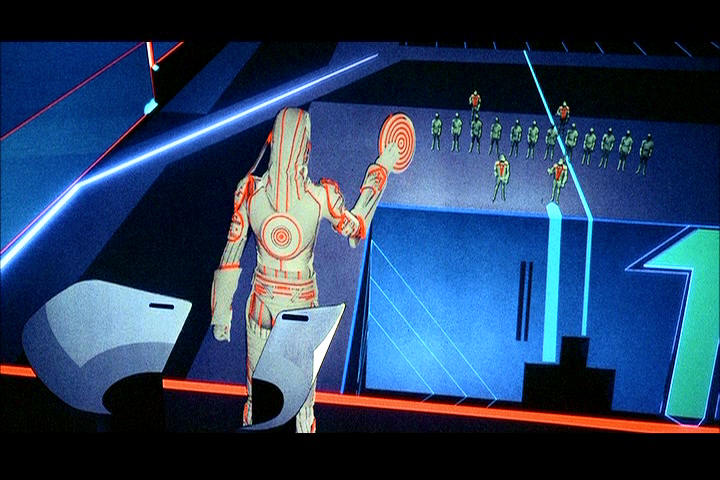 |
Once on the grid Flynn finds himself facing off against other programs in the very arenas, and using the very tools, he himself created (or helped create) for this world in the 5-11 computer. A world where the users, like Flynn (and us), are worshipped as gods by the programs created in this world. Programs that are seen as people (reflections of us) under the tyrannical rule of the MCP. As Flynn competes in the games that he created the MCP orders the enforcement program SARK (again played by David Warner) to ensure that Flynn dies while playing in his own creation, which has become a matter of life and death on the other side of the screen.
But Flynn is far from alone. Once he arrives he befriends a program named RAM (played by Dan Shor – “Billy the Kid” in Bill and Ted’s Excellent Adventure. He also asked Alan for popcorn in the real world.) as well as the program Alan created named TRON (again played by Boxleitner). Together the three escape the Game Grid during a Light Cycle contest and seek to make their way to an input/output tower so TRON can contact his user Alan.
On route Flynn and RAM are shot by a tank deployed by SARK. RAM derezzes (dies) while Flynn seemingly recreates a Recognizer from his own ‘Space Paranoids’ game, and resumes his journey to the I/O tower where TRON is already located. Once there he meets a program named YORI (who is played by Cindy Morgan), TRON’s girlfriend, and the two help convince the tower guardian DUMONT (played by Barnard Hughes) to allow TRON to contact Alan. DUMONT allows it, but is taken by SARK once TRON obtains data to help destroy the MCP.
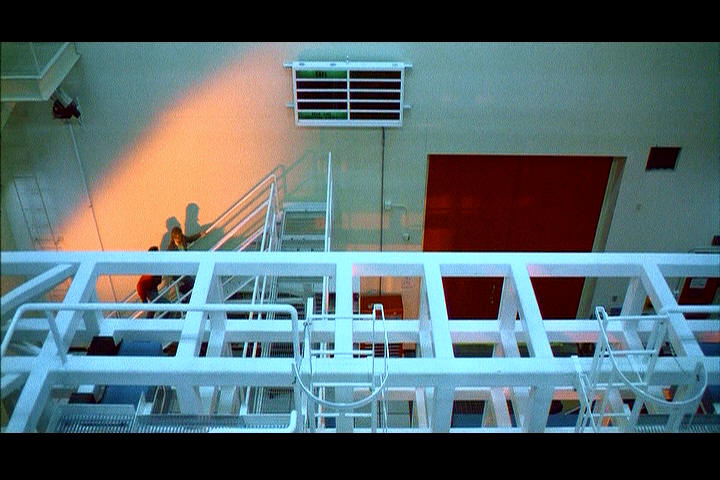 | 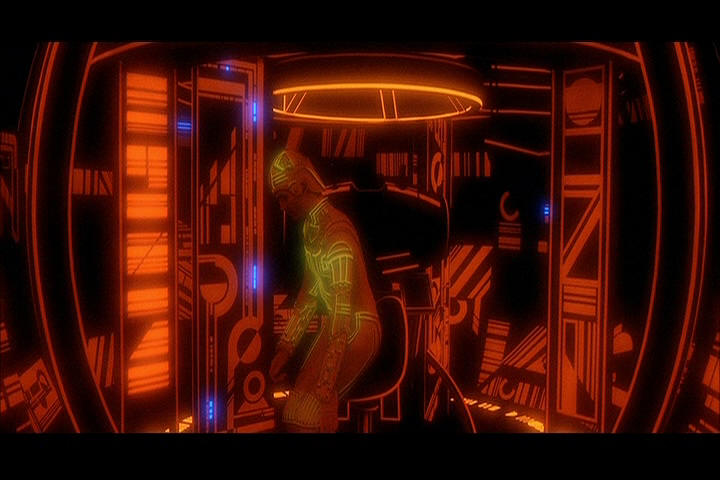 | 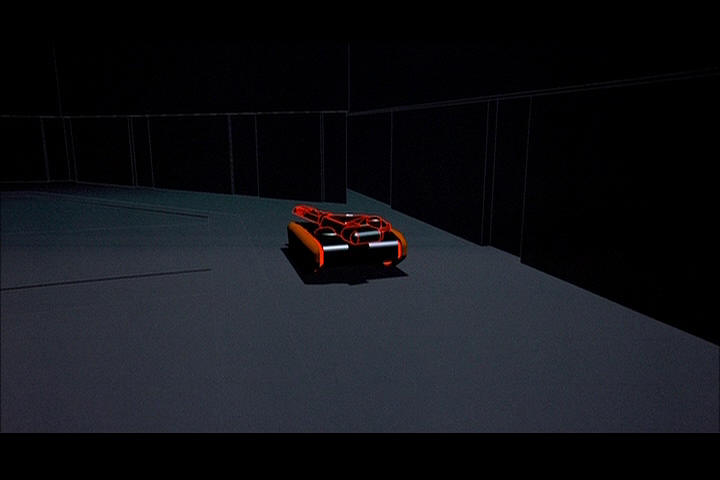 |
TRON and YORI then meet up with Flynn as they escape the I/O tower in a Solar Sailer making their way to the MCP. However, they are intercepted by SARK who captures Flynn and YORI leaving them to be derezzed as his carrier undergoes the derezzing process. TRON stows away on SARK’s shuttle and then confronts the MCP. After beating SARK, TRON has his hands full defeating the MCP until Flynn jumps into the MCP’s transmission beam allowing TRON to get in his shot with the disk. Once the MCP is destroyed TRON, YORI and DUMONT celebrate their newfound freedom while Flynn returns to the real world with the evidence against Dillinger, and becomes the new ENCOM senior executive.
Despite lukewarm box office success, TRON came off as the first movie to make use of computer generated imagery to tell its story. It was also the use of this imagery that prevented TRON from being nominated for an award by the Motion Picture Academy. Writer/director Steven Lisberger, however, believed a movie like TRON could only be done with CGI. Disney was also not doing good business at the time and was looking for a new, experimental way to do animation.
In TRON, Disney found that way.
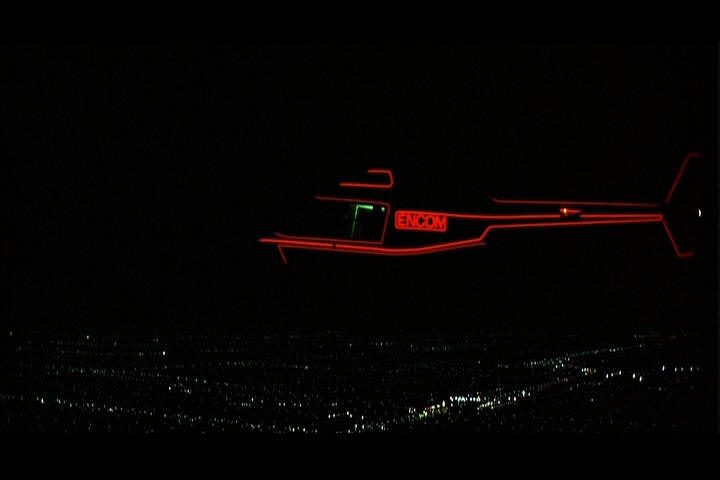 | 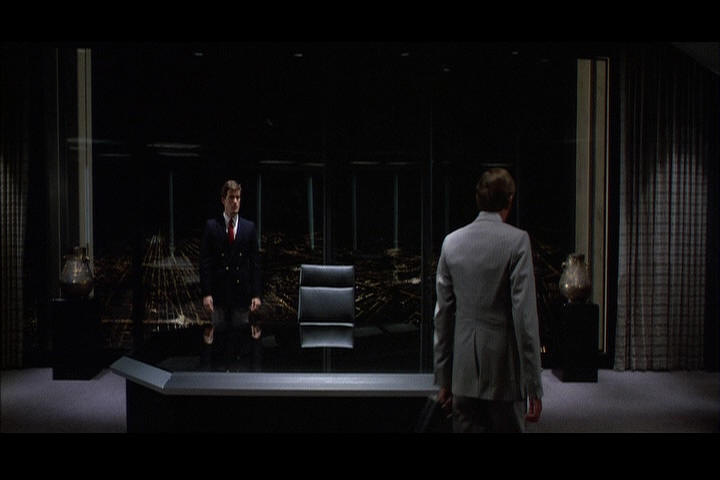 | 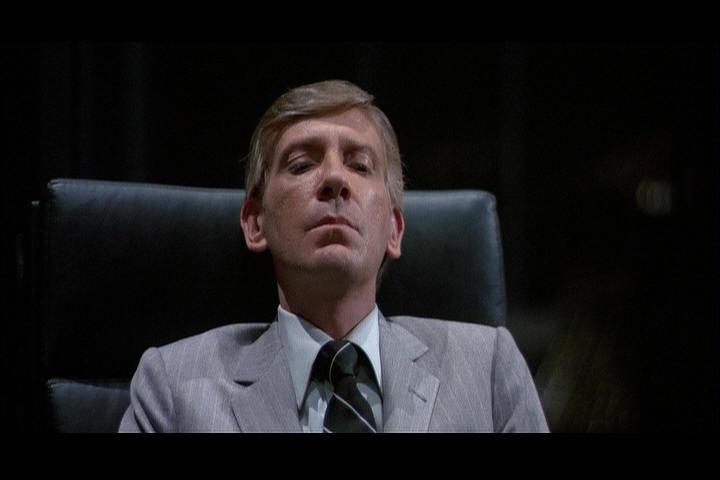 |
Backlit animation, where light was reflected off the programs’ costumes, was one of the approaches taken. The actors playing the programs wore costumes that were considered to be “skintight pajamas that were very revealing”. Jeff Bridges had to wear a tight dance belt with his. Bruce Boxleitner went on record asking “Where are the pants?” and Cindy Morgan would not wear hers until she lost 5 pounds.
The real world scenes were shot using normal means. Inside the digital world was where the magic happened. Aside from backlit animation, the scenes in the computer world were shot in 35mm black and white. The scenes were first shot on white backgrounds but then were changed to black backgrounds, being more practical for use.
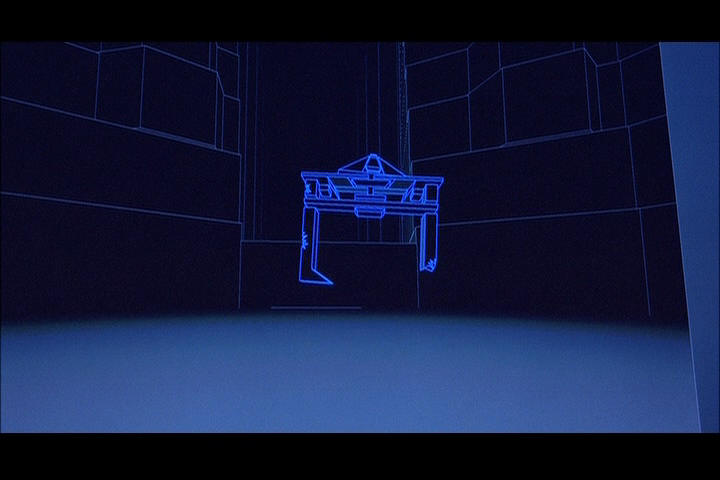 | 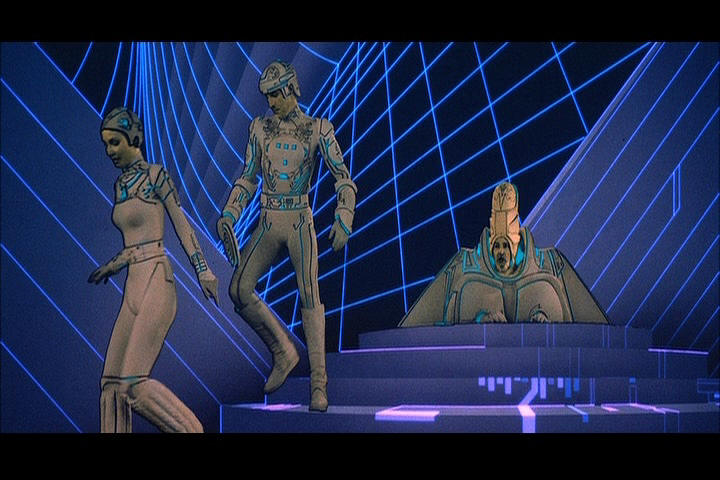 | 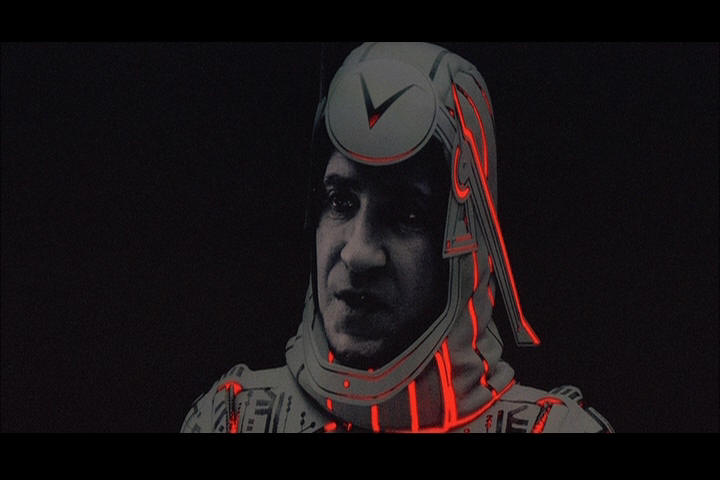 |
The color seen in the digital world was provided by the CGI that was used. The imagery was filmed on the backgrounds in several scenes providing back drops and views of the world inside the computer. Several companies provided computer animation. The main two were Mathematical Applications Group Incorporated (MAGI), which covered animation scenes needing fast action-like the light cycle sequences, and Information International Incorporated (I.I.I.) who reportedly did more complex sequences.
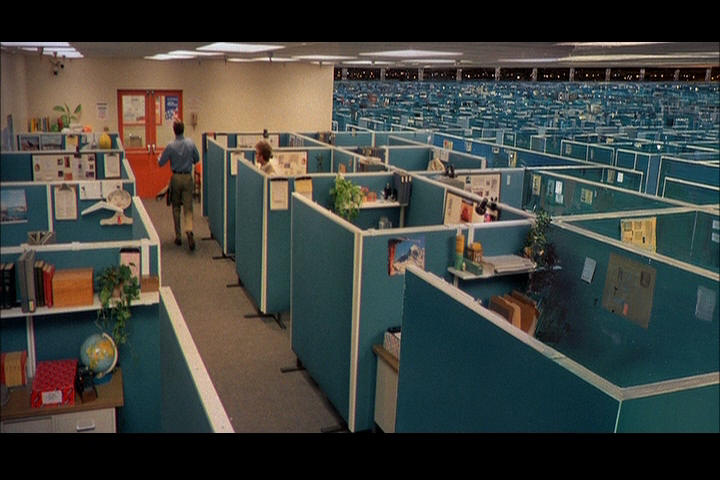 | 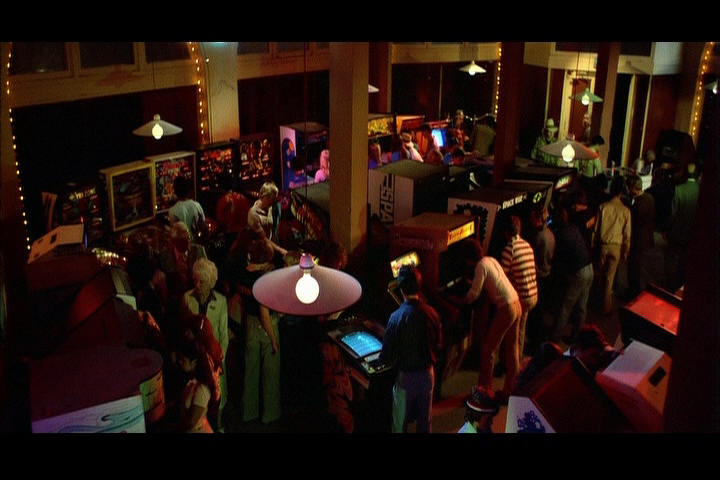 | 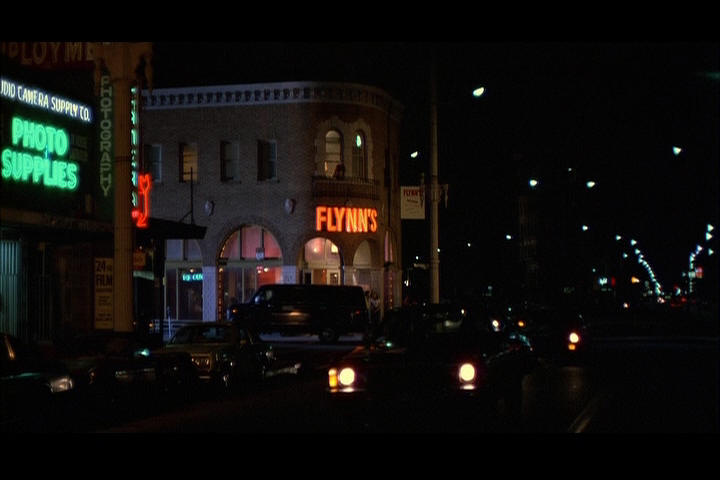 |
Minor corporations that also provided aid for CGI were Robert Abel and Associates, Digital Effects Incorporated, and Synthevision. Disney had also done hand animation to supplement the CGI. Most of the work there, however, was done overseas. Disney saw the potential in TRON and the positives in the new approach to animation TRON provided. In Disney’s mind, they figured they took the approach Walt Disney himself would have taken if TRON had been presented to him.
Lisberger believed TRON was a movie that could only have been done with CGI. The number of colors and resolution in computer generated components (24 or 32 bit color with horizontal resolution of approximately 3000 to 4000 pixels) is considered to be higher than most desk top displays, even today. It was also the first film to use transparency in 3D CGI with the Solar Sailer simulation.
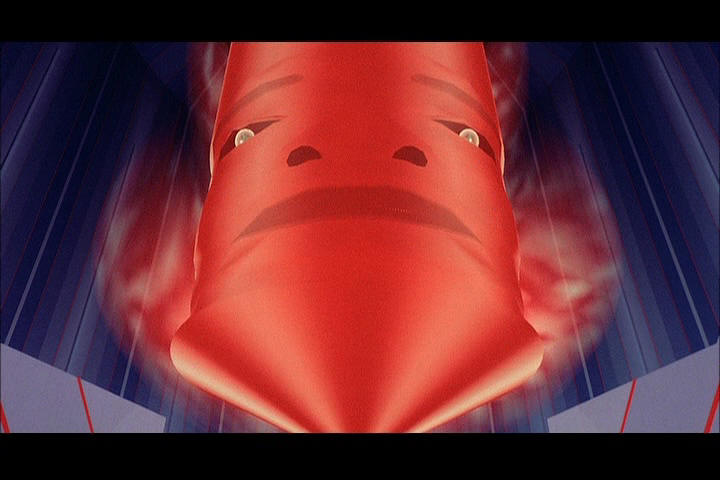 | 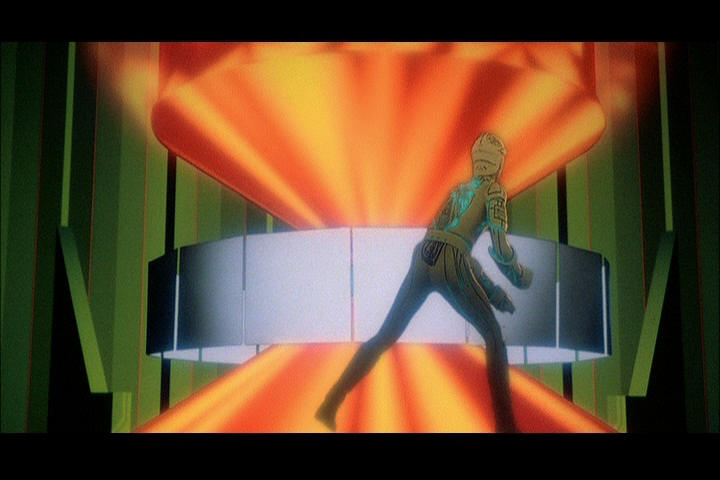 | 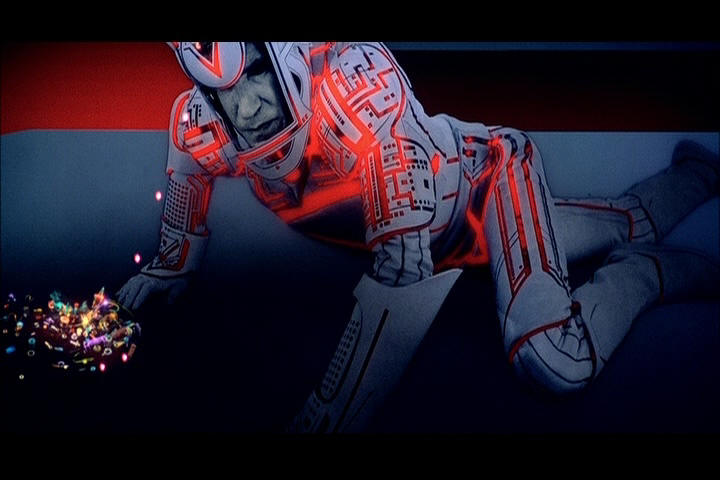 |
The actors found the working environment of TRON to be a confusing, yet fun, environment. Stuff that happened in the movie had to be explained to actors to generate believability. They also had to use their own imaginations to see how scenes looked. For Bruce Boxleitner, it was what he considered a ‘real’ theater experience. Actor Peter O’Toole (who was supposed to be Dillinger/SARK/MCP originally) had problems with the movie environment and dropped out.
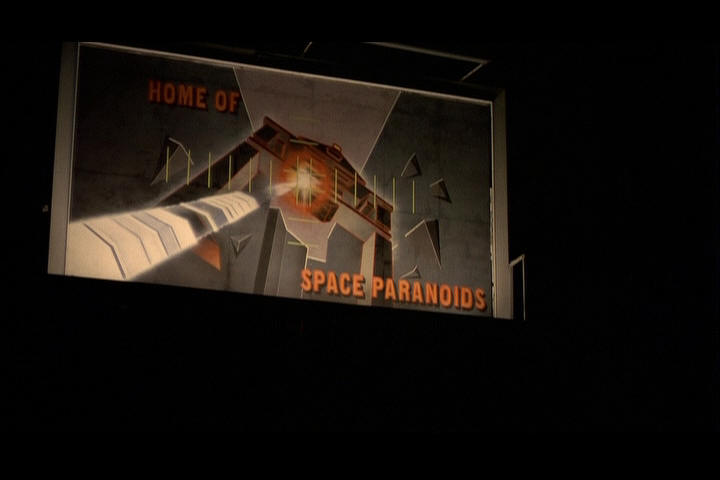 | 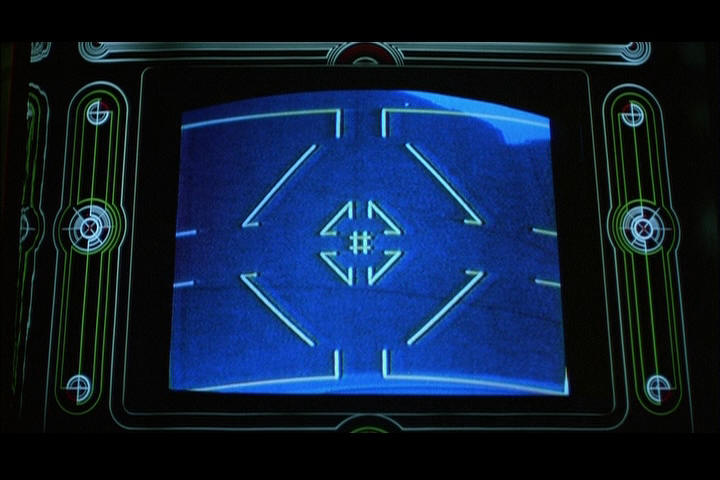 | 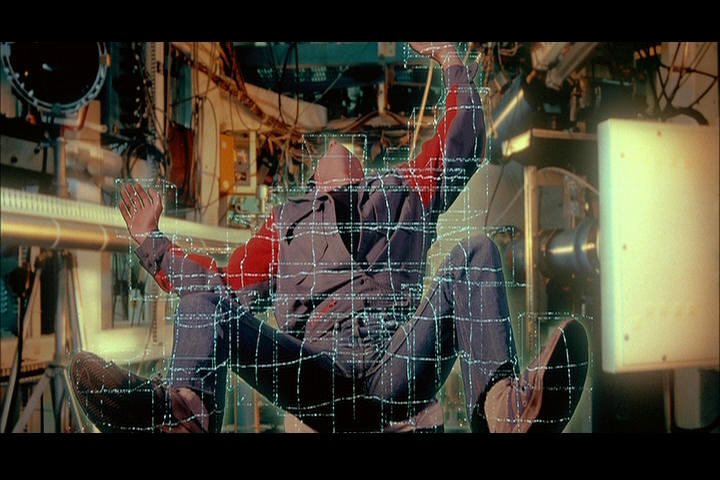 |
Another aspect of TRON that touches the imagination is the musical score composed by Wendy (formerly Walter) Carlos. The central musical theme of the movie is considered by some to be one of the most beautiful scores ever. The music compliments the production design efforts of Jean ‘Mobius’ Giraud, Syd Mead and Dean Edward Mitzner, who brought forth the designs the animators, under Lisberger’s direction, brought to life.
Nowadays the use of CGI is common today in science fiction and other films. On Babylon 5, where Boxleitner compared the computer animation of B-5 to that of TRON, Boxleitner called B-5 ‘the grandson of TRON’ in regards to computer animation.
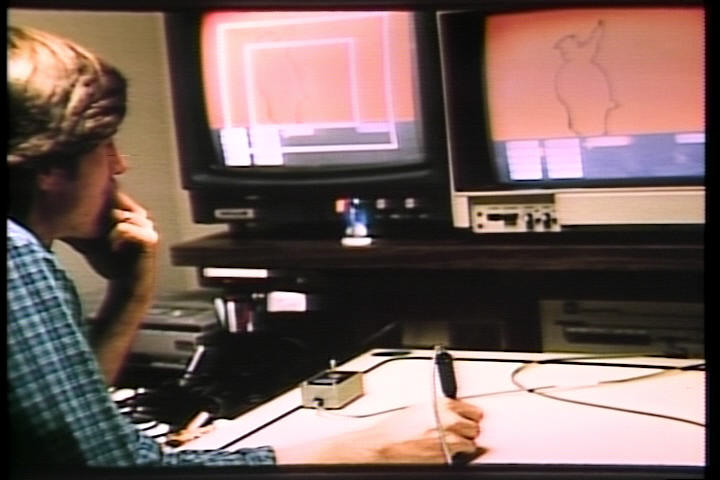 | 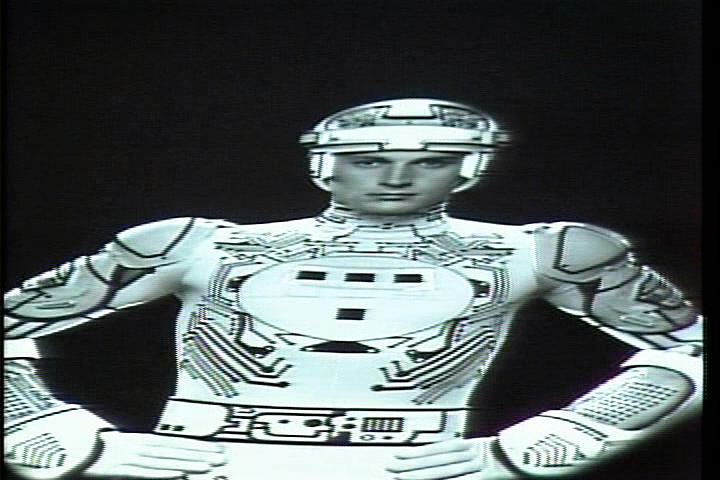 | 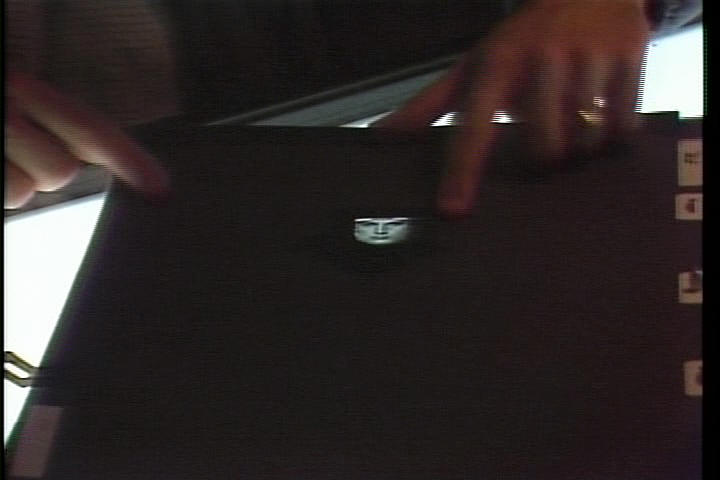 |
Yet while some considered TRON a success, the general consensus was that TRON was not the success that it could have been. The figures were considered lukewarm, and those figures carried into several products based on the movie, such as the home games that followed (more on those later). Yet for some reason TRON endures. When one thinks back on the origin of CGI, most think of the movie TRON as the movie that started it all. TRON also provided a look into the world of the computer that to this day no one has been able to duplicate. Some approaches to the idea were taken in TV, one or two movies, and cartoons, but very few delivered the imagery that TRON had. The only one that comes close to imagining the world inside the computer is that of the movie ‘The Lawnmower Man’ which explored the concept of Virtual Reality in a chilling manner.
I think it’s safe to believe that for most TRON was the innovator for the use of CGI today, and today it’s legacy endures. Even with new advances in computer technology today.
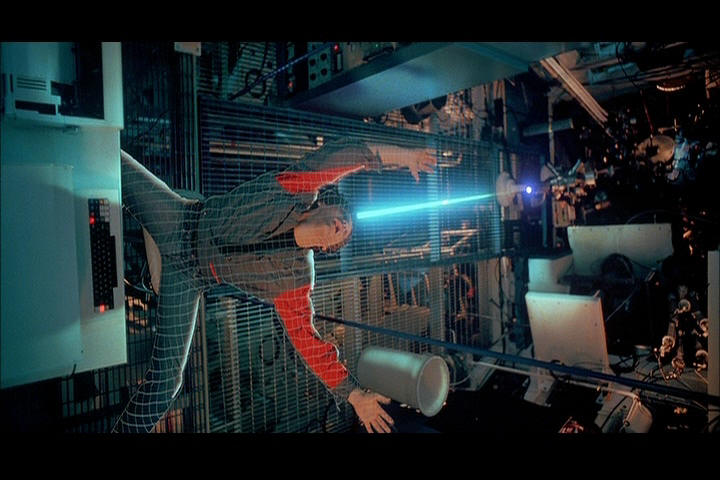 | 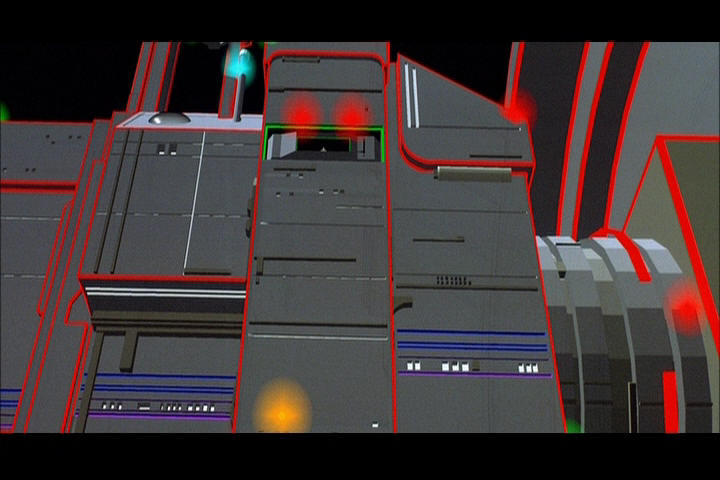 | 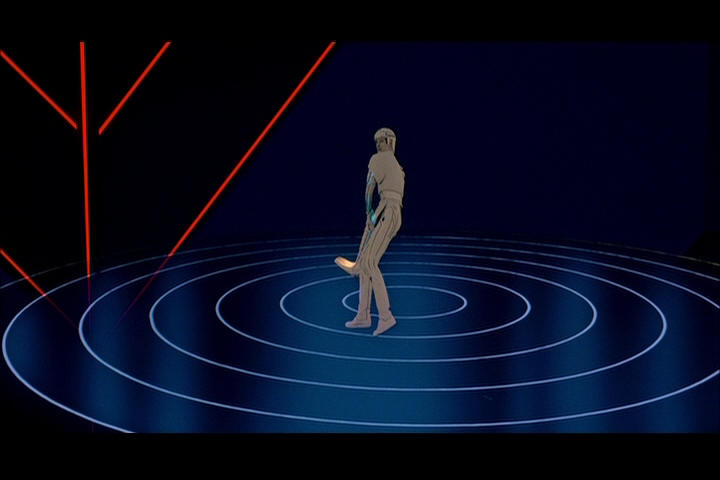 |
Written by JSC1